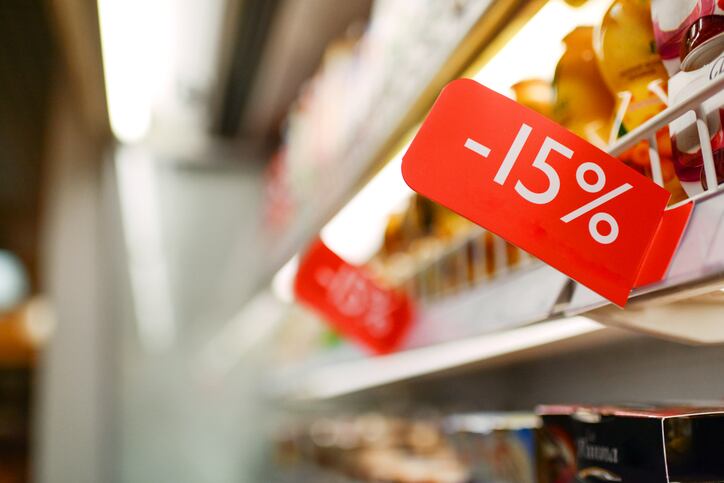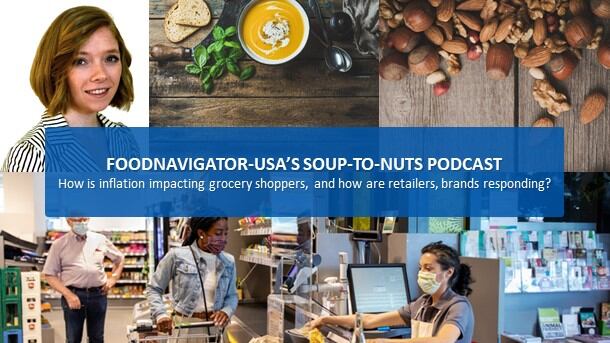The shift, while small, could give food and beverage brands pause as they think through their distribution strategies – lifting up channels they previously might have delayed entering or skipped entirely.
According to FMI’s Grocery Shopper Trends report released this month, supermarkets remain the channel most frequently shopped with more than 80% of consumers visiting them “regularly,” while 65% of consumers say the same about Mass, 44% about Club and 31% about Dollar.
Notably, however, Club is keeping pace with Supermarkets in terms of growth – both up 2 percentage points while Mass is up 1 percentage point compared to February 2021, according to FMI.
Drilling down to where consumers consider their “primary store,” the shift becomes more apparent with only 40% of shoppers attributing this designation to supermarkets in 2022 compared to 49% pre-pandemic in 2019. Over the same period, Mass gained dedicated shoppers with 30% calling it their primary store in 2022 compared to just 24% in 2019, according to FMI.
It also highlighted the growth in Club, noting that “while still a small player in primary store, the Club channel has steadily grown its share of primary designation over the past three years” from just 5% in 2019 to 9% in 2022, FMI notes.
“This growth in Club could be supported by its alignment with shopper cost-fighting strategies, as 21% of shoppers indicate they are buying in bulk to address inflation,” FMI explained, adding that low prices are a top five priority for consumers who choose Mass or Club, but not for those who choose a Supermarket.
The ripple effect of rising gas prices
Consumers also likely are drawn to Mass and Club as one-stop shopping destinations as they look to limit driving in the face of rising gas prices, suggests data from Placer.ai’s recent report The Impact of Inflation and High Gas Prices on Retail Foot Traffic.
Placer.ai tracked a dramatic 5.7% drop in foot traffic to retail stores the week of March 7 compared to 2019 when gas prices jumped 30.6% from the start of the year.
Foot traffic has recovered partially since then, down only 2.7% the week of May 16 compared to the start of the year, even though gas prices continue to rise – up 38.8% that week compared to the first of the year, Placer.ai notes.
“This indicates that while rising costs did provide an initial shock, behavior is normalizing. As consumers become accustomed to paying more at the pump and were no longer constantly reminded of the increase in gas prices [in the news], they returned to pre-gas hike habits,” Placer.ai explained.
But not all shoppers returned to their old ways – rather far more are visiting discount and dollar stores and superstores on a weekly basis than supermarket relative to the equivalent week in 2019, according to Placer.ai.
Compared to the first full week of the year, weekly visits to dollar and discount stores are up 36.9%, while superstore visits are up 8.5% and grocery store visits are up only 0.5%, according to Placer.ai, which reasons that “while inflation is also beginning to impact dollar store prices, foot traffic data indicates that dollar store prices are likely still low enough to attract shoppers looking to stretch their paycheck.”
Deal-hunting on the rise
According to FMI, shoppers are embracing other tried-and-true strategies for reducing their costs in the face of rising prices across the board.
The most popular strategy, by far, is deal hunting – embraced by 51% of shoppers while only buying a product on sale was noted by 31% of consumers, according to FMI.
“Deal-seeking occurs both within and across stores, though shoppers with fewer resources shop fewer stores, not more,” FMI noted.
Close behind was buying more store brands (35%) or different brands (19%) followed by simply buying fewer items (31%), FMI said.
In addition to switching brands, some consumers are buying different products. For example, 21% are buying less fresh meat and seafood, 15% are buying more frozen meat and seafood and 11% are buying more canned meat and seafood, FMI found.


